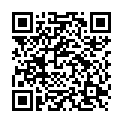|
|
|
| Module code: E918 |
|
4V (4 hours per week) |
|
5 |
| Semester: 9 |
| Mandatory course: yes |
Language of instruction:
German |
Assessment:
Written examination
[updated 12.03.2010]
|
E918 Electrical Engineering, Master, ASPO 01.10.2005
, semester 9, mandatory course
KI738 (P222-0110) Computer Science and Communication Systems, Master, ASPO 01.04.2016
, semester 1, optional course, telecommunications-specific
|
60 class hours (= 45 clock hours) over a 15-week period.
The total student study time is 150 hours (equivalent to 5 ECTS credits).
There are therefore 105 hours available for class preparation and follow-up work and exam preparation.
|
Recommended prerequisites (modules):
None.
|
Recommended as prerequisite for:
|
Module coordinator:
Prof. Dr. Horst Wieker |
Lecturer:
Prof. Dr. Horst Wieker
Prof. Dr.-Ing. Wolfram Seibert
[updated 12.03.2010]
|
Learning outcomes:
This lecture course covers more than just data acquisition and processing in automotive systems and goes beyond functions such as ESP and blind spot monitoring. Current research work will be examined to show how cars can exchange data and how so-called ‘data fusion’ can provide new interpretations of vehicle data, such as hazard detection. One of the areas is linking sensor data to generate information about the state of the road surface or visibility conditions.
Students will learn about the currently established information transfer channels (C2C: car-to-car; C2I: car-to-infrastructure). After completing this course of lectures, students will be able to view an automobile as an application and to develop new car-centred services for the automotive sector.
[updated 12.03.2010]
|
Module content:
1.Sensors in vehicle systems
2.Advanced vehicle dynamics
3.Control processes in ABS and ESP systems and their extensions
4.Data generation and distribution models (C2C, C2I)
5.Relevance checking of information
6.Data transmission systems and their effects on message distribution
ad-hoc networks, wireless LAN 802.11x, 802.16, 802.20, GPRS, UMTS, DRSC
[updated 12.03.2010]
|
Teaching methods/Media:
Video projector, blackboard, lecture notes
[updated 12.03.2010]
|
Recommended or required reading:
Accompanying lecture notes
[updated 12.03.2010]
|


